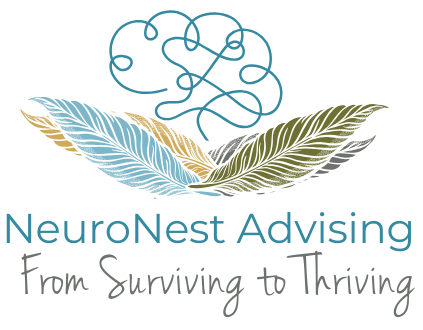If you’re raising a neurodivergent child, you’ve probably been on the receiving end of a long list of recommendations—from pediatricians, teachers, therapists, fellow parents, grandparents… the list goes on! Try this therapy. Consider this supplement. Talk to this specialist. And while each suggestion may be well-meaning, the process of putting it all together can feel overwhelming—especially when your child is still struggling with emotional regulation or impulse control, and you’re left wondering: Where do I even begin?
The truth is, there’s no single solution that works for every child. What often makes the biggest difference is not one intervention, but a thoughtful combination—an integrated, whole-child approach that sees beyond isolated symptoms and instead supports your child’s development across all areas of life.
What Does “Integrated” Really Mean?
An integrative treatment plan recognizes that your child is not just a list of symptoms to manage — they’re a whole human being with a brain, body, and environment that all interact. This approach pulls together different interventions that support your child across multiple domains, including:
- 🏫 School supports and accommodations
- 🧑👩👧 Parenting strategies and home routines
- 🛌 Sleep hygiene and regulation
- 🏃♀️ Movement and exercise
- 🍎 Nutrition and supplements
- 💊 Medication, when appropriate
When these systems are working in harmony, children are much more likely to thrive — both emotionally and behaviorally.
Where Do You Start?
A common question I hear often from parents is: Where do I even begin? It can feel overwhelming to piece it all together — especially when multiple diagnoses or challenges are in play. One helpful way to start is by asking: What’s driving the bus right now?
In other words, which symptoms or behaviors are having the biggest impact on daily life? What’s interfering most with your child’s ability to function and with your family’s overall well-being?
As a parent, you often have an intuitive sense of what that is — and your instincts are worth listening to. While I’m not a clinician, I firmly believe that parents are often the first line of insight and advocacy, and sometimes the first to recognize that something deeper is going on.
Why Untreated ADHD Can Undermine Everything Else
If ADHD is part of the picture, it’s important to know that untreated ADHD often disrupts the effectiveness of other therapies or adjustments you may be making. Emotional regulation tools, anxiety strategies, even talk therapy—these are often undermined if impulsivity, inattention, and hyperactivity are unchecked. (I explore this more in an earlier article, linked here.)
While medication has been shown by research to effectively reduce core ADHD symptoms in many children, it’s also totally valid that some parents feel hesitant about starting meds at age 8—or earlier. That’s where a whole-child approach really shines, because there are additional tools that can support brain health and regulation, such as:
- Omega-3 supplementation
- High-protein, low-sugar nutrition plans
- Daily movement or sensory regulation activities
- Parent-led behavioral coaching and modeling
Parent Coaching: A Proven First Step
In fact, the American Academy of Pediatrics recommends parent training as the first line of treatment for children with ADHD, particularly under age 6. Parent coaching gives you a practical toolkit for responding to behaviors, supporting emotional development, and creating home routines that work for your unique child.
You Don’t Have to Do It Alone
Yes — a multi-pronged plan is ideal. But it can also be overwhelming. Many of the families I work with feel like they’ve been thrust into the role of care coordinator, researcher, and advocate all at once. And that’s where support matters.
As an all-source analyst for the CIA in a former life (yes, you can ask me about it!), I know what it’s like to dig deep, connect dots, and exhaust every possible lead. And as my lawyer husband can attest, I can be a bulldog when it comes to advocating for others.
Today, I help parents step back and take a clearer look at the big picture — identifying what’s working, what’s missing, and how to create a more sustainable, whole-child plan that actually fits your family.
You don’t have to quarterback it all alone.
I’m here to help.


